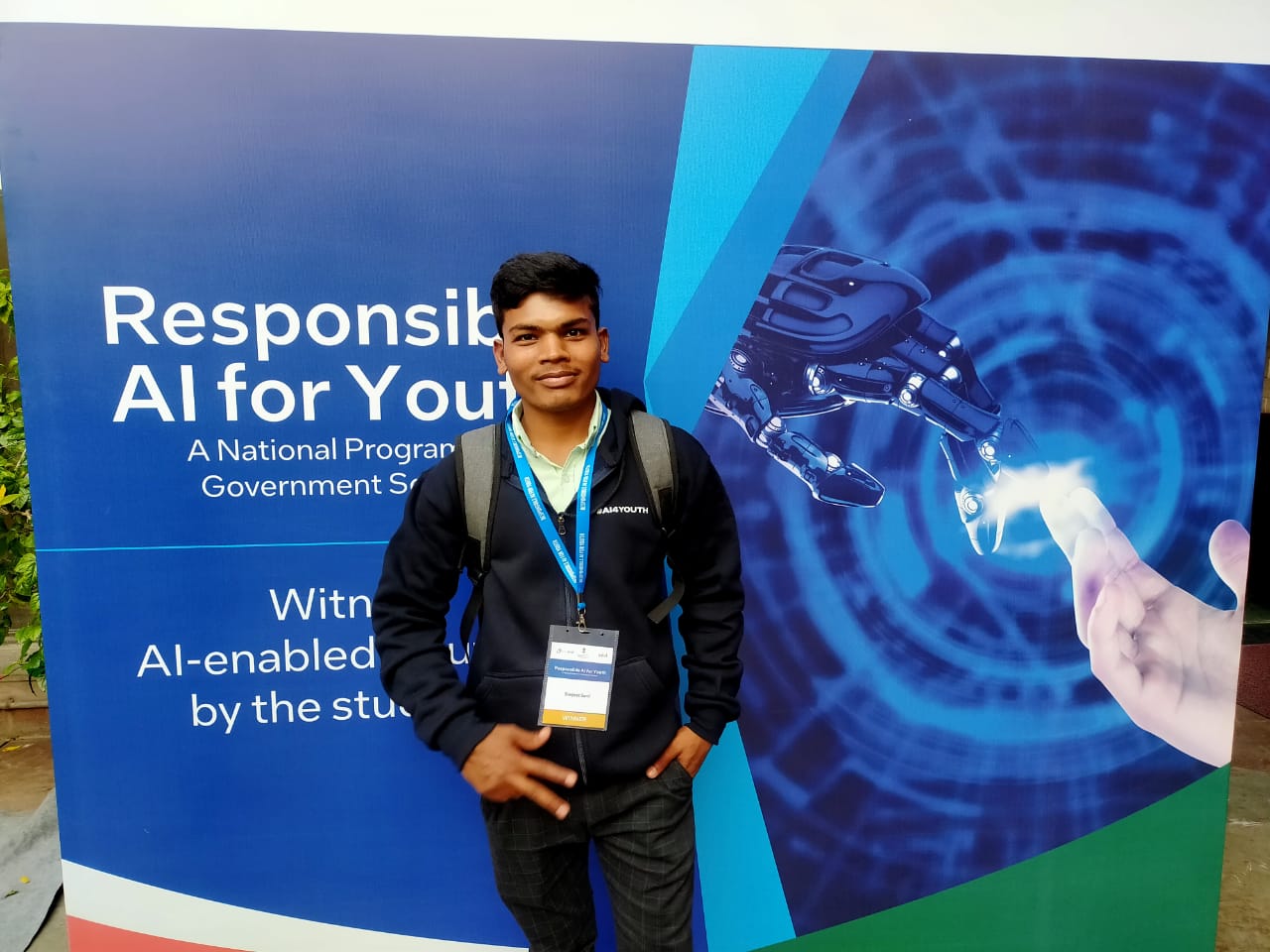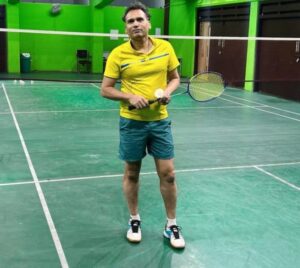19-year-old Sanjeet Soni doesn’t come from a high-profile private school, yet he has made it big in the digital arena with his latest AI based project titled the Smart Eye.
Today’s cover story is special as Sanjeet, a Chandigarh resident who has recently passed Class XII from Government Model Senior Secondary School, Sector-33D, Chandigarh talks about his visionary ideas to revolutionize the education sector.
He happens to be one of the 27 genius minds who have been selected out of a pool of 52,628 students hailing from 35 states, 5 UTs and 724 cities.
Earlier this week, the Azadi Ka Digital Mahotsav (Nov 29 – Dec 5, 2021) was celebrated wherein the top 20 AI based projects created under the national program for government schools called ‘Responsible AI For Youth’ were recognised. The 27 students from government schools across the country representing these projects, including Sanjeet, were felicitated by Ashwini Vaishnav, Minister of Electronics & Information Technology, Railways, and Communications.
These students- 13 girls and 14 boys- from 14 states and 1 UT have been a part of the program designed by the National e-Governance Division (NeGD), Ministry of Electronics and Information Technology (MeitY), Government of India, and tech giant Intel.
Responsible AI For Youth was carried out in three phases. In phase I, the program reached out to 52, 628 students from 35 states,5UTs and 724 cities. Of this, 11,466 students completed the first level of AI training. In phase II, 100 project ideas were selected. Represented by 125 students from 25 States and UTs, the students were provided extensive training and mentorship by intel coaches. In the final phase, the top 60 projects were selected for a national showcase which was then again shortlisted to get the top 20 projects winners, which include our city boy Sanjeet.
Sanjeet is currently pursuing his Bachelors in Computer Applications from the open-board Indira Gandhi National Open University(IGNOU).
We at Tricity Scoop caught up with Sanjeet to know more about the project and what motivated him to come up with it.
1. What is the ‘Smart Eye’ project? What motivated you to start the same?
My project Smart Eye, which is using artificial intelligence, will capture the attendance with name, Id, time, and date when students and teachers enter the school by the face recognition system. After taking attendance, it will re-run after every 20 minutes and recheck the attendance of initially present students.
2. What makes this project unique? What are some challenges that it’ll help to address?
When a class teacher enters the class with a fresh mind and full concentration for teaching her/his first task is to take the attendance. It is time-consuming for a teacher to read every student’s name during attendance. Hence, this project not only saves time but also helps in checking the presence of students repeatedly. Some students after morning attendance or in recess time bunk the school, on which Smart Eye keeps a check.
3. What garnered your interest in AI? How do you stay abreast with the latest technological developments in AI?
Artificial intelligence is a very interesting, challenging and fast-moving technology. The first thing which I liked the most was that I could put my logical thinking to good use and secondly, it mimics human intelligence which is very interesting. Maybe it will completely change the way humans live in the future.
To hone my expertise I keep reading online news, such as Science Daily and currently, I am also reading the “Artificial Intelligence – A Modern Approach”.
4. What’re your plans of expansion for this project?
I would be working on its other facets to improvise the project.
1. Attendance analyzer: It will analyze students’ attendance performance and then it will issue a notice to the students whose class attendance is less.
2. Chatbot: When we need to find someone in the school then we go from room to room and ask everyone, hence it is a very tedious work and also disturbs others. If you want to find a particular person in school then you can simply enter his ID and Name, following which it will recognize his face with the ID and Name and will give the room’s location in which the student is present.
3. Student Security: Some students leave the house early for school or college but they arrive late, which is also worrying for the parents. With the help of artificial intelligence, when the student enters the school, then a message will be sent to his parent’s phone. And when he comes out of school, then a message will be sent to his parent’s phone.
5. Who are the people who supported you in making this project a success?
This program was run by Digital India, Ministry of Electronics and Information Technology, NeGD, Government of India, and Intel India called ‘Responsible AI for Youth’.
Under this project, different government schools across the country participated, of which 100 students were further selected. All the participants were given personal laptops and there was a 1-month training class about Artificial Intelligence. My class teacher Deepkiran ma’am and Intel’s teacher Anith Sir, helped me a lot in making this project a success.
6. One piece of advice for other young visionaries.
Let us all together prepare India for the future, and make the youngsters of India an AI-ready Generation.
The Project
An AI-powered facial recognition technology to automatically record the attendance of students. Sanjeet Soni has developed an AI-based facial recognition technology that can be used to record class attendance regularly. This smart facial recognition technology records every walk-in, in every class and keeps updating the student data every 20 minutes to keep a check on students who bunk classes. It will help reduce the time teachers spend every day to record and file every student’s attendance.
How does it work?
This technology is developed using several open-source libraries such as Numpy and Pandas. Local Binary Pattern Histogram, an algorithm for facial recognition is used to train the model. The student data is fed into the model which is then matched with particular names in the database. The model marks the students as present if a student mentioned in the database is detected in the classroom and absent if the student is not detected during regular scanning.
Currently, the model only records the attendance, however, going ahead it will be developed to analyze the attendance to mark scores and to locate any student on the school’s premises. All one will have to do is enter a student’s name and the system will show where that student is in the school.







Comments are closed.